- Researchers are learning more about the biology, ethology and conservation status of elusive snow leopards, thanks to advances in satellite telemetry, camera traps, fecal genetics and GIS.
- New, albeit disputed, estimates suggest the snow leopard population is greater than previously thought, but the species is under accelerating threat from poaching, overhunting of prey, retaliatory killing by herders, mining, roads and climate change.
- The protection of the snow leopard, its prey and its highland habitat must remain global priorities to ensure this big cat’s long-term conservation.
The grayish-white form of the ghost of the mountain slinks through the snowcapped slopes of Central Asia. Its remote, harsh habitat, cryptic coat and elusive nature have impeded investigation and made monitoring the snow leopard (Panthera uncia) arduous, if not impossible. Technological advances, however, are changing that.
New population estimates for the big cat, based on a knowledge review process begun in 2008 incorporating increasingly sophisticated technology, are higher than prior ones. A study of Snow Leopard Conservation Units comprising 44 percent of the species’ three million-square-kilometer range suggests there could be 4,678 to 8,745 individuals just within surveyed areas. Till now, scientists believed the global snow leopard population numbered between 3,920 and 7,500. They stress that they can’t say the population has increased but their ability to estimate it has improved.
“New technologies in the hands of respected experts across snow leopard range, yielded, for the most part, the raw data for a more robust population estimate,” said Tom McCarthy, Director of Panthera’s Snow Leopard Program.
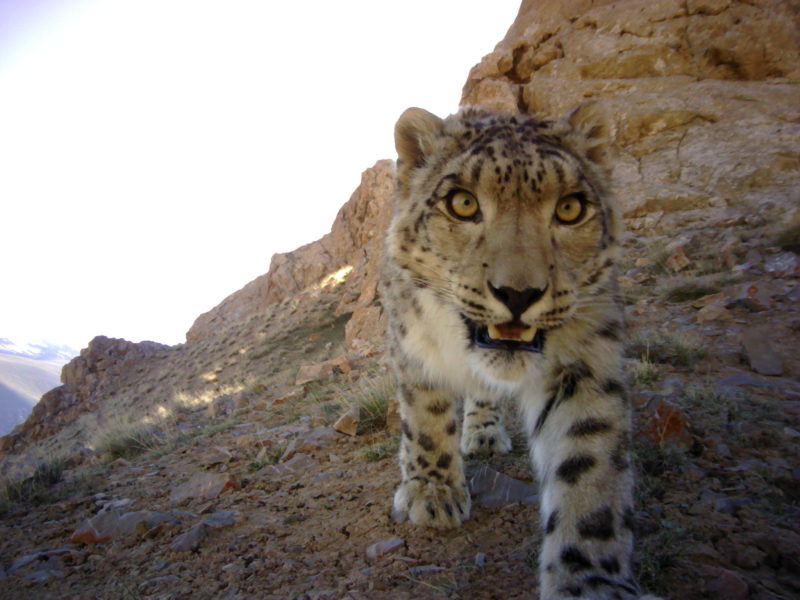
Collars, Cameras, Poop and GIS
McCarthy has used telemetry and camera traps, two such technologies, for decades. In the early 1990s, he conducted a large study in Mongolia using standard VHF tags attached to collars. Following the signals of these tags was difficult, requiring researchers to hike on the ground with handheld antennas—a time-consuming and frustrating process—or track from a small aircraft—a costly and risky option. But now GPS satellite tags track the cats as frequently as scientists off-field wish, uploading far more detailed, accurate near real-time readings to them via satellite phone and providing more insight into individuals’ movements, habitat selection and home range size.
“Once we get the collar on the cat, we have an unimaginable amount of procurable data for most collars,” McCarthy said. “That’s been a huge step in our basic research.”
From 2008 to 2013, he returned to Mongolia and partnered with the Snow Leopard Trust to fit nineteen animals with GPS-enabled collars; the project followed more of the cats than all other studies combined, resulting in unprecedentedly vast data collection.
“That’s really exciting,” he said. “It sheds light on one part of the range; how snow leopards live and threats they’re faced with on the edge of the Gobi are going to be different from in the Wakhan Corridor of Afghanistan, Himalayas of India or Tian Shan mountains of Kyrgyzstan. We need to undertake studies like that in different areas.”
Panthera recently launched a satellite collaring program in Kyrgyzstan; WCS is undertaking one in Afghanistan.
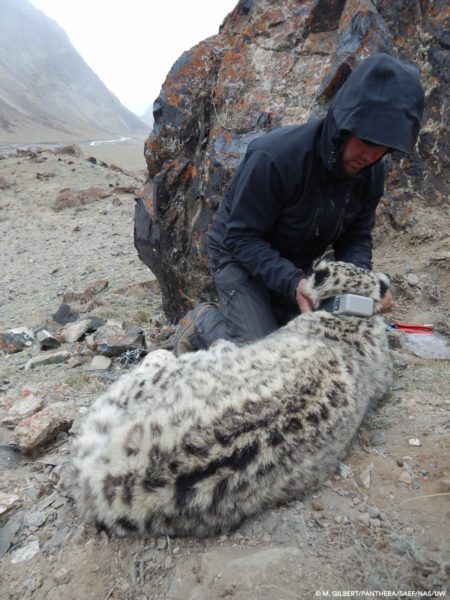
Camera trapping is another continually developing technology that has aided snow leopard research over the last 15 years. In Mongolia, McCarthy was part of initial efforts to build the first remote cameras—dismantling, drilling holes in and attaching wires and foot pedals to cameras to get a glimpse of the enigmatic leopard. Now that technology is highly advanced, cheaper and used ubiquitously by wildlife biologists studying all kinds of species. Modern compact camera traps withstand extreme cold, snap nighttime photos, take multiple consecutive pictures and shoot daylight and infrared video in considerably higher resolution than just a few years ago. Panthera alone has 500 to 600 cameras monitoring snow leopards at a time.
“The storage capacity on a camera is tens of thousands of images, so these have really helped us understand population numbers,” said McCarthy. “If we put those out over a large area and leave them for a long time, we’ll get dozens of images of snow leopards; we can identify them by individual spot patterns. From that we can estimate population size using various statistical methodology.”
According to the Snow Leopard Conservancy’s Rodney Jackson, who in the early 80s in Nepal became the first expert to radio-track snow leopards, “Camera trapping and satellite telemetry have played pivotal roles in the conservation of snow leopards by enabling biologists to obtain more accurate counts from selected survey areas; though these have tended to be small in extent, results can be extrapolated to a wider range provided densities are carefully calibrated and indexed to comparable habitat conditions, where the level of threat, availability of prey and extent of potential conflict with local herders is also taken into account.”
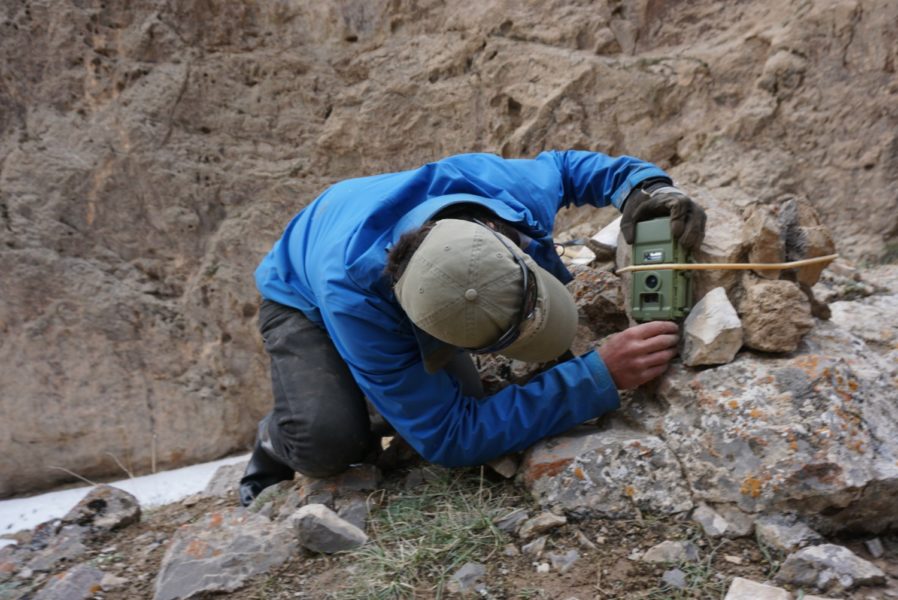
Genetics have also been brought to bear on the new population figures. Testing fecal DNA identifies the cat that excreted the feces; however, collecting and analyzing hundreds of these samples is laborious and expensive, especially when some turn out to be from another species.
These field-based technologies have largely replaced sign surveying. A technique researchers relied more on in the 90s and early 2000s, it involves walking along a transect looking for signs of the leopards. Scrapes—little holes they dig and urinate on to mark their territory, most frequently during mating season—are one such sign. It’s sometimes hard to extrapolate high snow leopard density from a high number of scrapes, feces and scent sprays, so scientists have mainly used sign surveys to simply tell whether the cats occupy an area. According to McCarthy, camera trapping and fecal genetics, although more expensive, give much more accurate information about snow leopard ecology and population size.
Remote data analysis has also made huge strides, particularly in spatial ecology—understanding where snow leopards live and what makes certain areas important to conserving them. Conservationists are harnessing evolving GIS and various models and platforms such as Google Earth to better comprehend data gathered from fecal genotyping, camera trapping and, especially, radio collars, McCarthy noted.
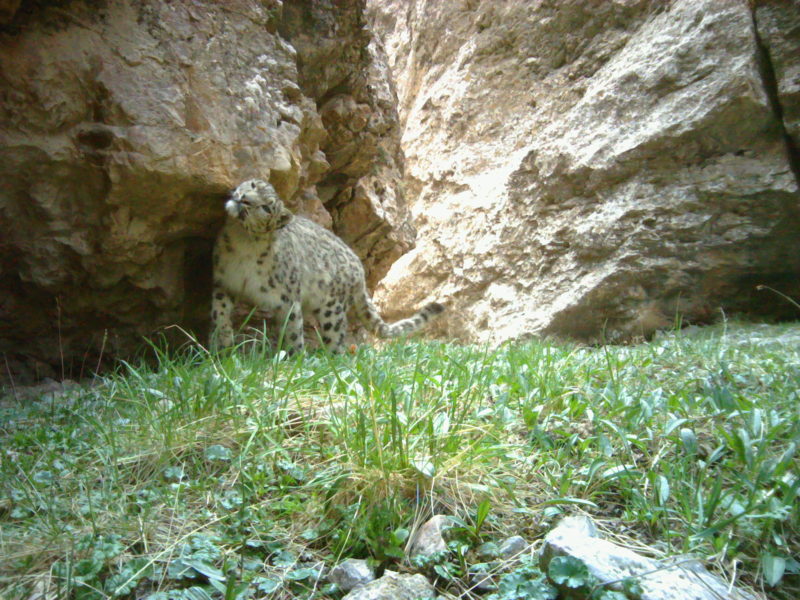
Tech Across the Central Asian Range
Progressing technology is particularly useful given the isolated, dangerous and poverty-stricken areas snow leopards inhabit. Camera traps, for instance, make such places accessible for months on end—only requiring researchers to go in once to set them up and again to pick them up—and gather massive quantities of data. Technological innovation, McCarthy pointed out, can help range states honor the Bishkek Declaration, which they all committed to in 2013 to collaboratively prioritize enhancing snow leopard science and conservation.
“That agreement means those countries will embrace better technologies so we can better understand the distribution and threats snow leopards are faced with in each country,” he said. “Hopefully that will lead to improved conservation across the range. A lot of them are poor and don’t have the ability to do it, but that’s where conservation NGOs like Panthera have the ability to provide those technologies.”
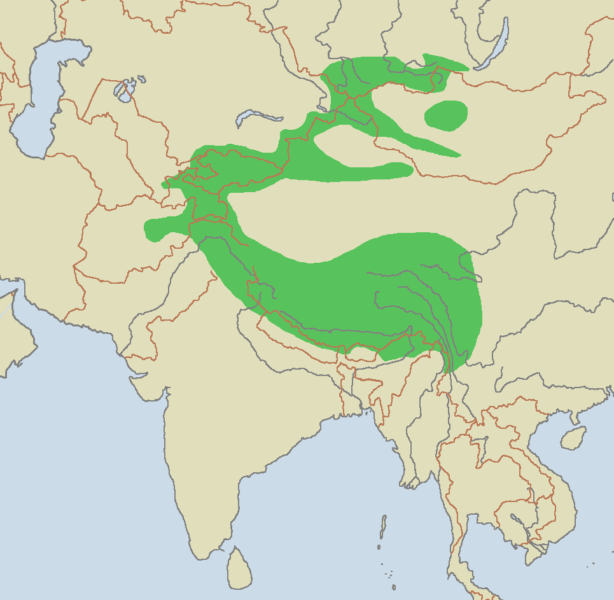
In villages like Yangma, perched high above all others in the eastern Nepalese Himalayas, nonprofits and locals together apply technology to snow leopard conservation. Since 2013, World Wildlife Fund (WWF) and community members, who all belong to the Snow Leopard Conservation Committee it established, have collared three leopards in the area.
WWF researchers have trained villagers in basic monitoring. Experienced villagers now accompany the organization and Nepali government on collaring expeditions. The locals use camera trap and sign survey information to select tagging sites, then put out a network of leopard-friendly snare traps and help collar captured individuals. Not only does this level of community participation promote snow leopard conservation by motivating locals to protect the cats they share the mountains with, it also stimulates the village economy.
A Controversial Count
The updated population count appears in Snow Leopards, an exhaustive book on their biology, ethology and conservation status. Snow leopards may occupy vast, minimally disrupted habitat and be more common than once thought, but they’re still endangered. Some people have actually rejected the optimistic new findings as unscientific, unreliable and potentially detrimental to conservation.
Gustaf Samelius, assistant scientific director of Snow Leopard Trust, told TakePart that the book’s population section’s authors “have been a little uncritical of how they arrived at the numbers.” In his view, calculating abundance is extremely tough, especially for snow leopards, whose home range size varies from dozens to hundreds of square kilometers depending on the individual. He questioned the validity of the updated estimate because the technology-based research supporting it happened in just a small portion of the cats’ range.
“Only about 1.5% of total snow leopard range has been surveyed with reliable, internationally accepted methods such as intensive camera studies or genetic analysis of feces,” states the Snow Leopard Trust blog. “These population figures are once again simply guesstimates–nothing would suggest they’d be more accurate than prevailing ones.”
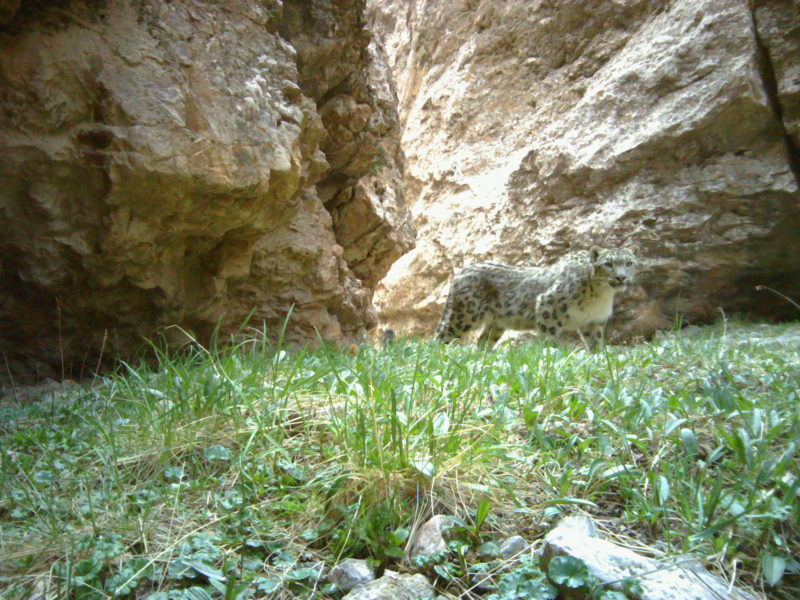
“We recognize it is a guesstimate, but it is the most scientifically derived guesstimate anybody has come up with,” argued McCarthy. “The population estimate people like to quote, 3500 to 7000, those estimates are over 20 years old. Those estimates were not the product of nearly as much field work as our newer estimates, nor did they have the advanced technologies or analytical techniques we do.”
He recounted that biologists arrived at the bigger number by identifying conservation units important for snow leopards’ long-term persistence and estimating a bounded range for how many of the cats live in each unit. The conservationists backed each estimate with its basis—camera traps, fecal analyses, older methods such as sign surveys.
“I can’t understand why we would want to revert to an unsupported estimate from 20 years ago when we have an estimate backed up by the best science we have, generated by the world’s top 25 snow leopard experts with representation from 11 out of 12 snow leopard states,” he said. “This was the collective mapping of knowledge of people that have spent the most time in snow leopard range; they did it using some of these new technologies. Why anybody would brush that off and say we shouldn’t report this is beyond me.”
But the Snow Leopard Trust points out that the authors sometimes cite ambiguous sources and weak indicators, such as sign surveys, “habitat quality,” “questionnaires” and “informed estimates,” in their regional calculations. The organization says such poorly supported science “will lead to a sense of complacency and weakened resolve to protect this endangered cat.”
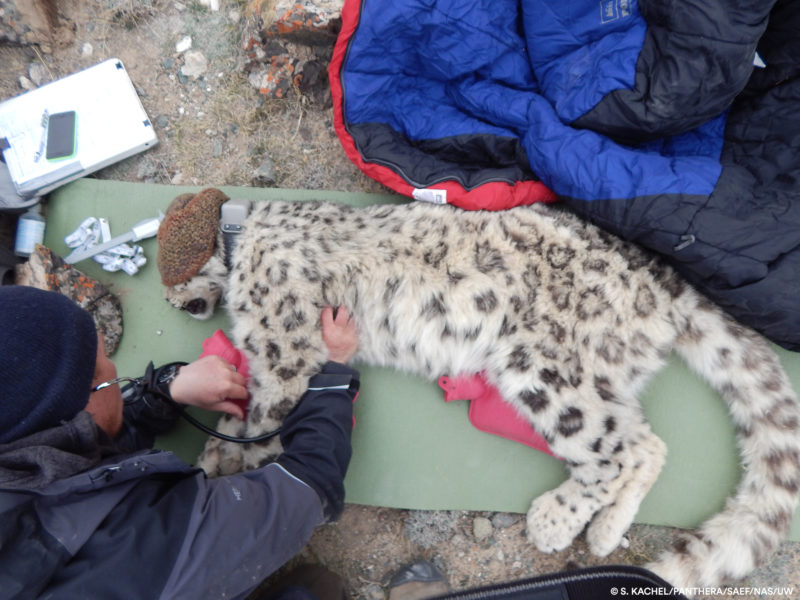
“We did not call this a conservation success story. We said this is a better estimate based on good science. If that translates that the snow leopard is not a species we should be concerned about and to less conservation funding, I don’t think that’s a reason to ignore good science,” countered McCarthy. “As the entire book points out, the snow leopard is in need of extensive conservation action.”
The nonprofit calls for a stop to the “numbers games” in order to maximize research and conservation. Regardless of this debate, however, such efforts should be informed by well-supported population estimates so that ecological trends can be monitored, effective management actions taken and progress toward conservation goals evaluated.
And as Jackson sees it, “The new numbers have been based on an increasing baseline of camera trap and genetic surveys aimed at better estimating how many snow leopards there are in the wild. These are not yet sufficiently representative of the snow leopards’ vast range to generate robust findings in which one can have reasonable measures of confidence to base management or conservation decisions around.”
According to WCS Afghanistan Program Director Richard Paley, poachers target snow leopards for their fur and locals kill them for hunting livestock, which the cats are driven to consume because overhunting has depleted their natural prey. Intensifying mining, roadwork and climate change pose additional threats that rapidly further limit our opportunity to conserve this species for posterity, added Zahler, Coordinator for the WCS Snow Leopard Program.
“The protection of snow leopards, their prey and their unique high-mountain landscapes must continue to be a priority for the global community,” concluded Zahler.
